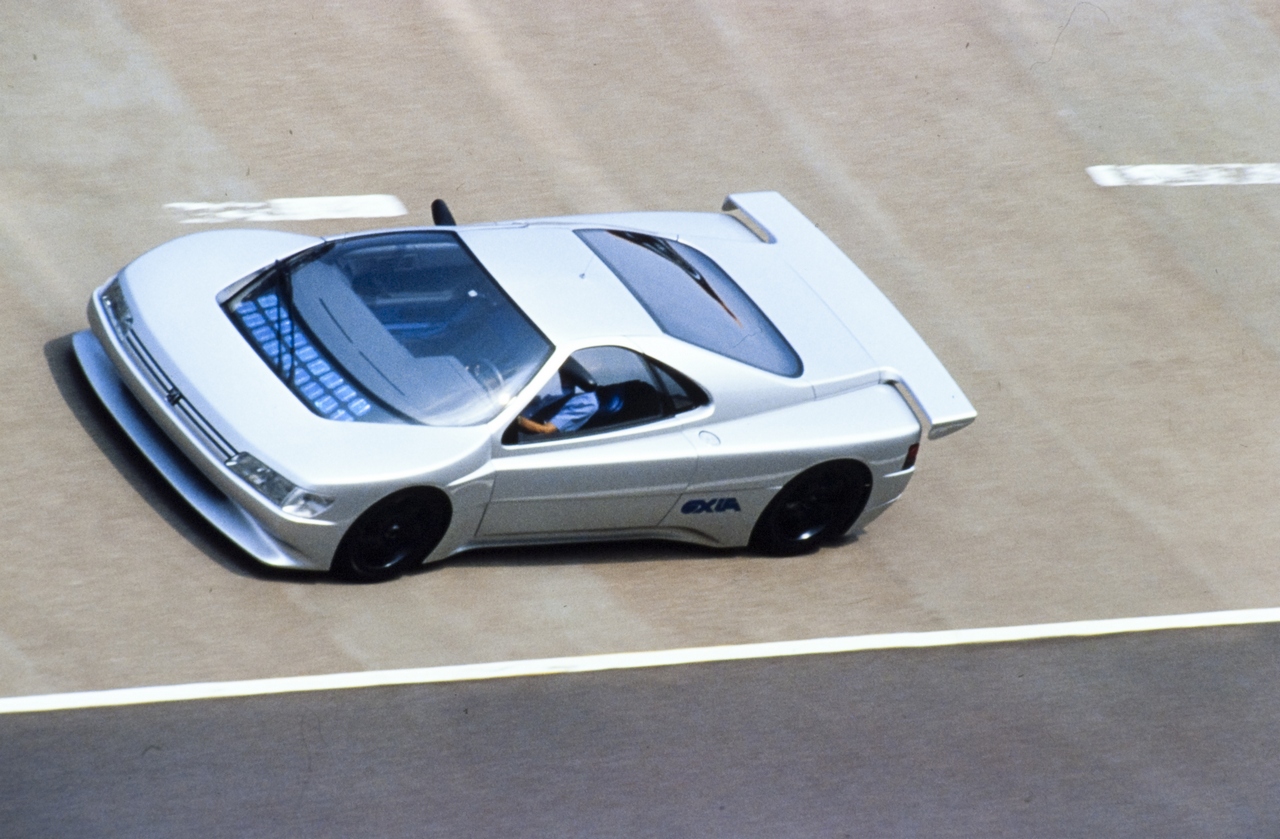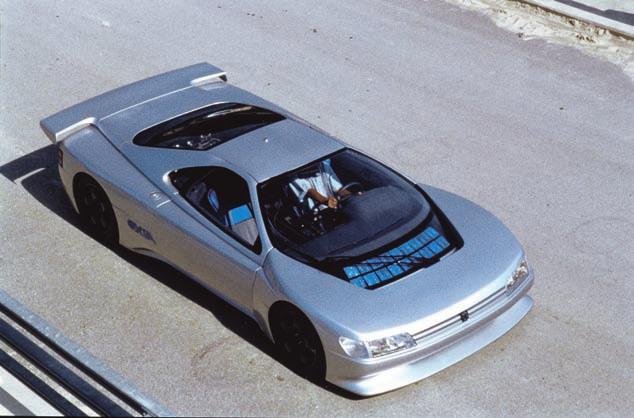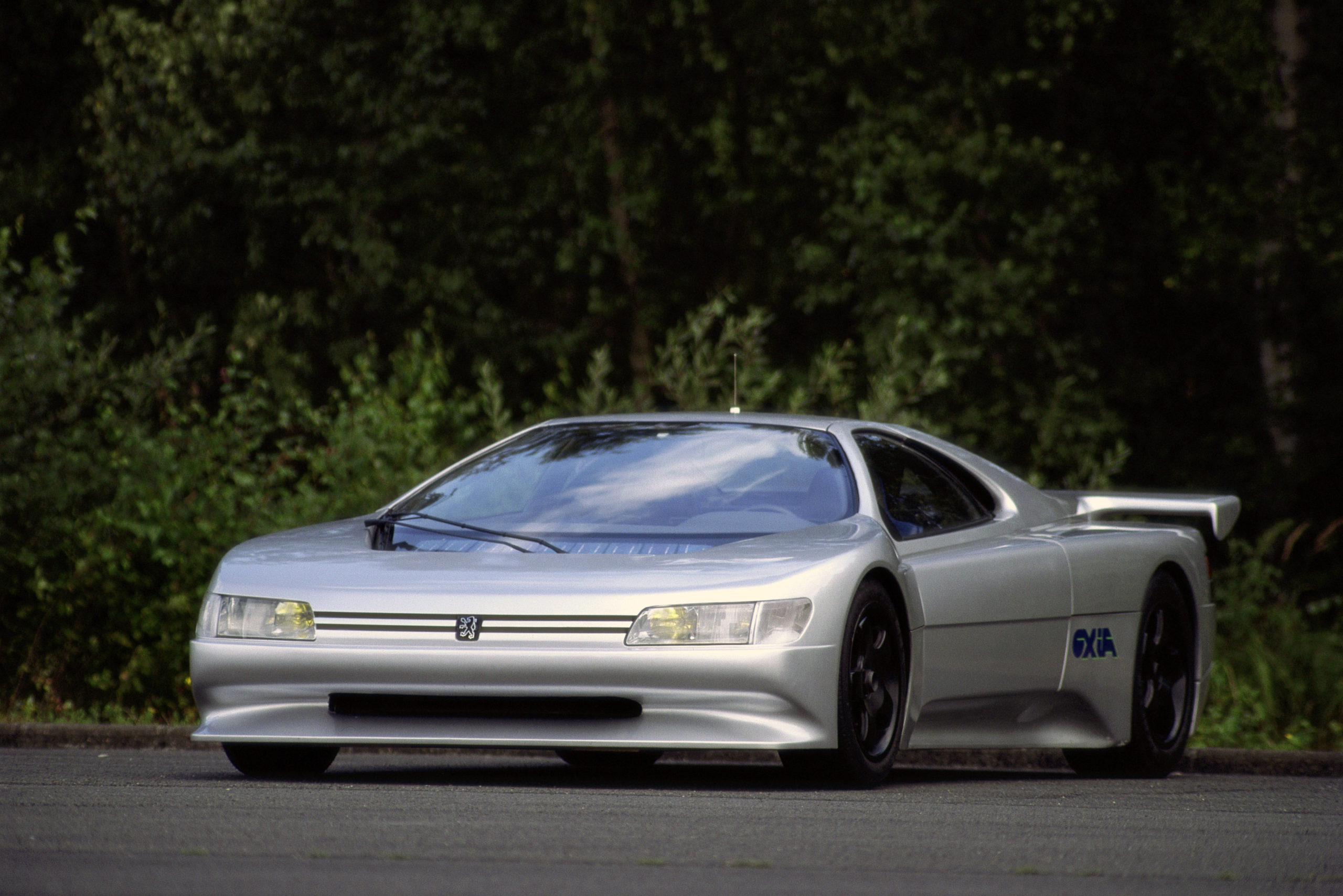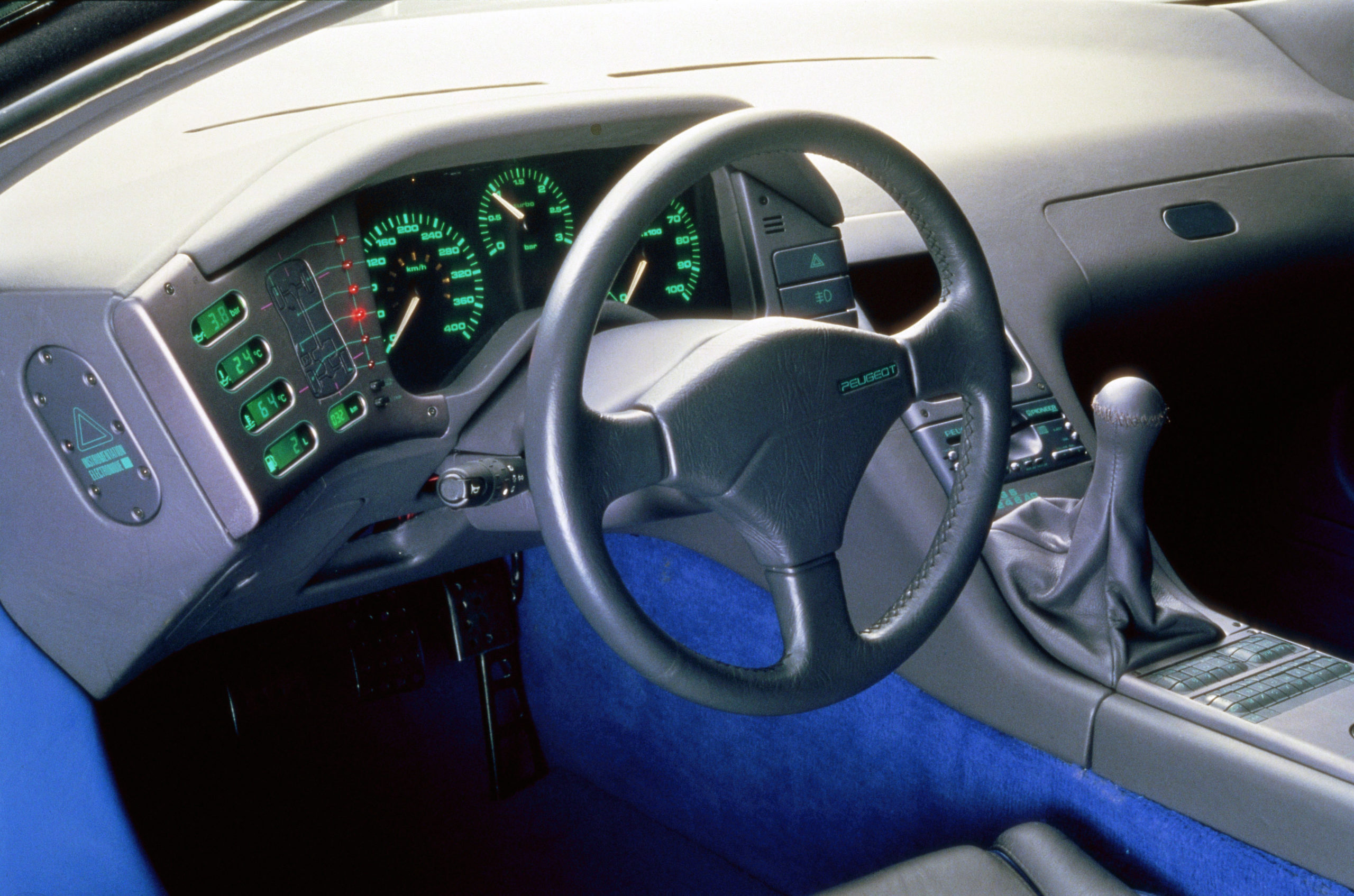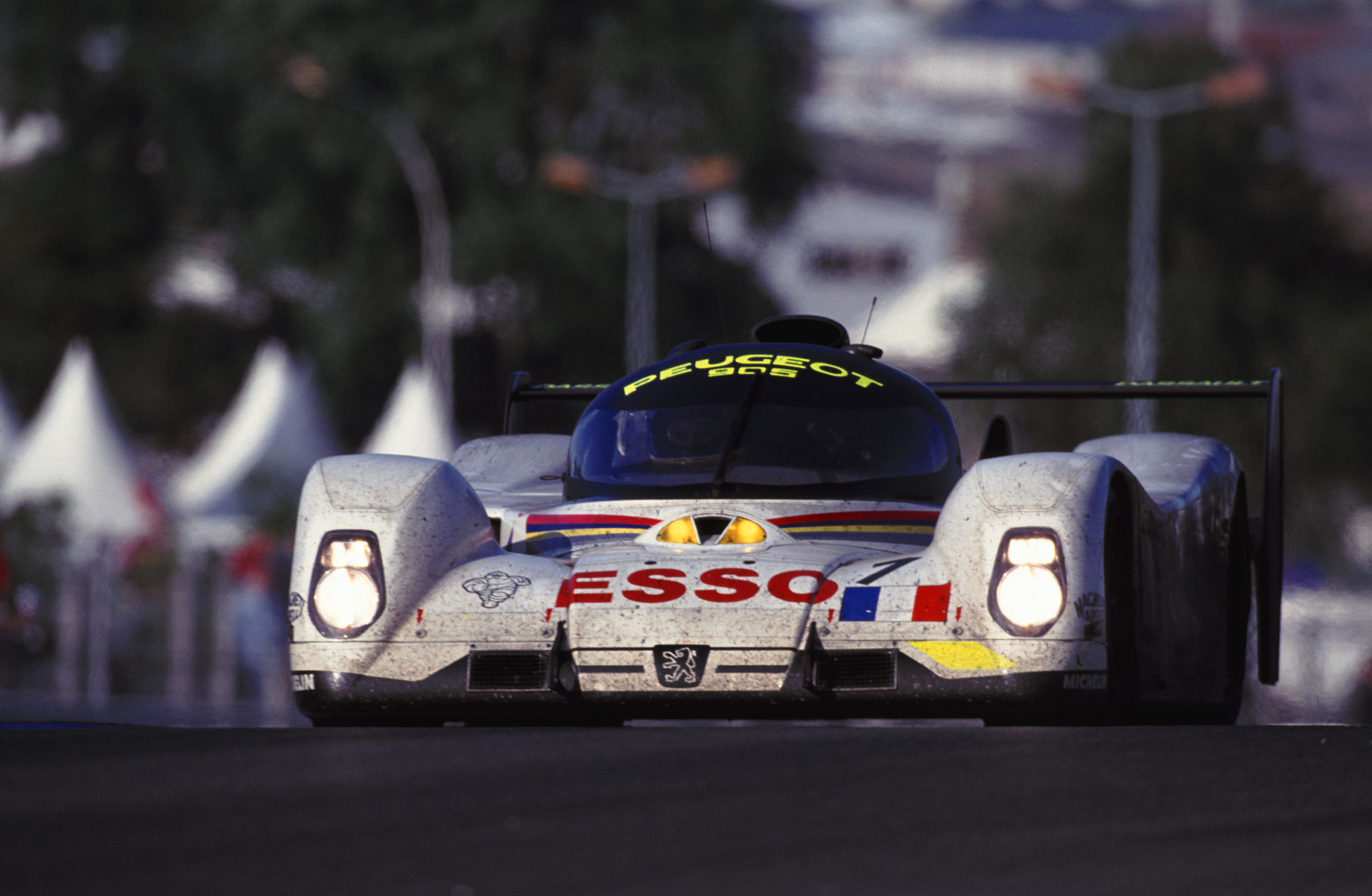Photo credit: Artcurial, Peugeot, Wheelsage
In the mid-80s, Peugeot, which was winning both in Rally Championships and at the Dakar with the 205 T16, set out to make an evolution of this fortunate model for what would be the future Group S. A category that never saw the light of day because the compact, lightweight cars that were being prepared appeared too risky to be used in road races such as rallies.

The small Quasar, with the same advanced mechanics as the 205 T16, including a transverse engine and four-wheel drive wasn’t however destined to remain a useless experience. The desire for racing, and in particular Peugeot’s concerted effort to win the 24 Hours of Le Mans, was expressed by a fascinating supercar called Oxia, presented in 1988 at the Paris Motor Show.
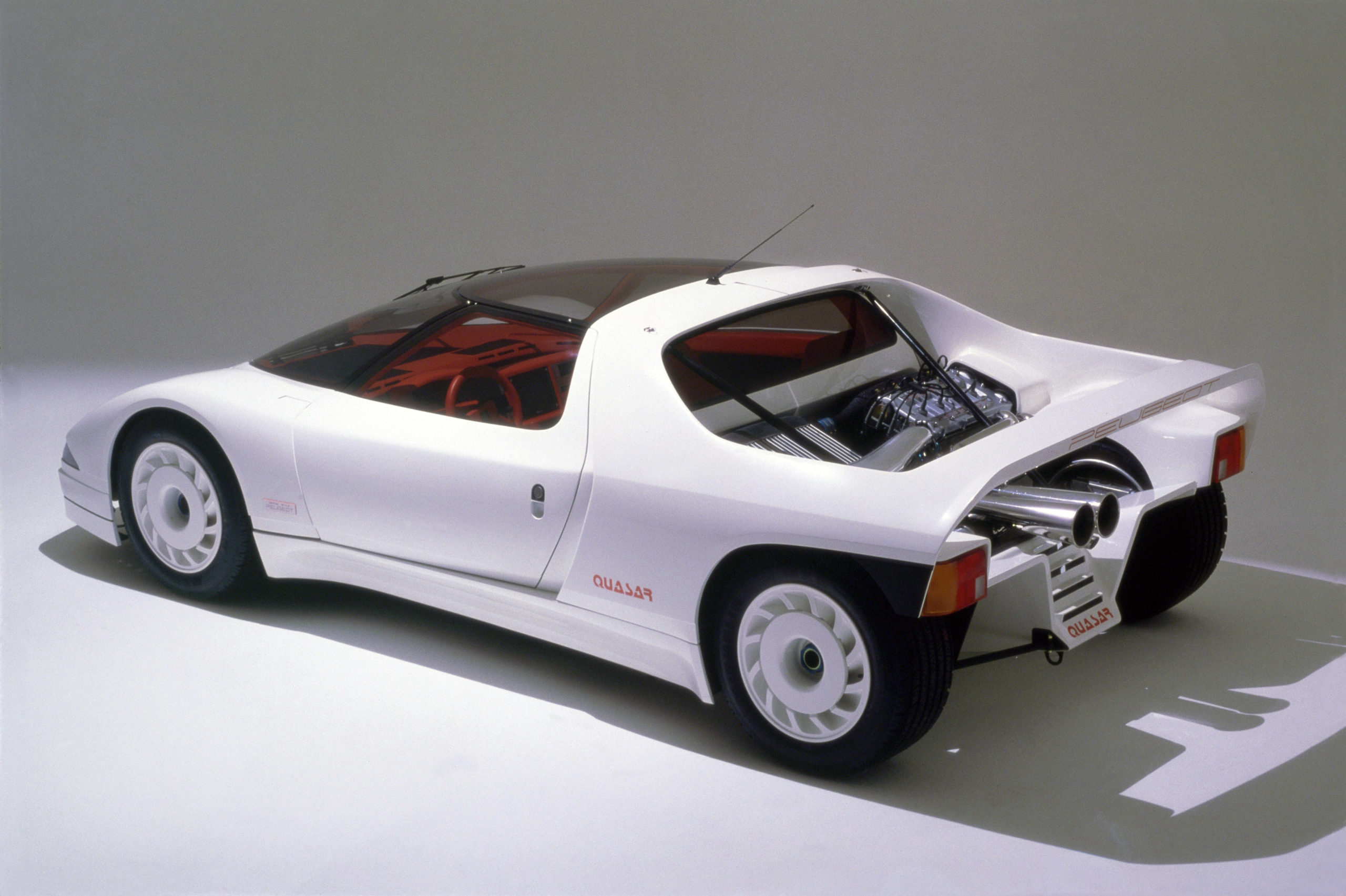
In addition to being other-worldly from an aesthetic standpoint, the car was a laboratory of future car technology for Peugeot, including radical items even by today’s standards including solar panels on the hood to power the on-board electronics, the air conditioning and the radio. The 2,489cc twin-turbo V6 engine pumped out 680hp, capable of pushing the car to over 350km/h. The chassis was constructed from aluminium and the body was made of composite materials, it was all-wheel drive and also had four-wheel steering. Only 2 were ever built, but we can certainly say that the Oxia represented an important step for Peugeot on its way to victory at Le Mans in 1992 and 1993.
